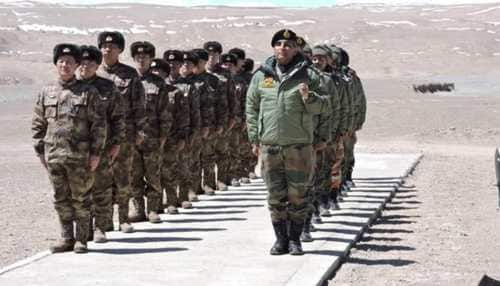- News>
- India
India-China Border Agreement: Patrolling Rights At Depsang, Demchok Set To Be Restored; Know Its Importance

As per the latest agreement, India can now again patrol up to points 10 to 13 in the Depsang Plains and Charding Nullah of Demchok.
Ahead of the winter, India and China have reached a crucial negotiation deal where the two sides agreed to restore the status quo as of 2020. The two countries reached a patrolling arrangement along the Line of Actual Control at key contentious points. This is a significant development given the four-year-long military stand-off where India openly made it clear that Sino-India relations are not normal and Beijing can't be trusted. Now, the two countries have agreed to restore patrolling rights to each in the Depsang Plains and Demchok region. These areas are crucial as China had earlier refused to include them in talks and problems in these areas were called legacy issues.
As per reports, the patrolling will be done along the LAC as per the old manning points. As per the latest agreement, India can now again patrol up to points 10 to 13 in the Depsang Plains and Charding Nullah of Demchok. On the other hand, the situation in Galwan Valley and Pangong Tso will remain as per the earlier disengagement agreement where buffer zones were created to maintain peace.
Friction Points
In eastern Ladakh, there are seven key friction points where Indian and Chinese troops have faced confrontations since May 2020. These include PP 14 (Galwan), PP 15 (Hot Springs), PP 17A (Gogra), the north and south banks of Pangong Tso, the Depsang Plains (where Chinese forces blocked Indian access to the PPs), and Charding Nullah.
Demchok: The Demchok region is divided by the Line of Actual Control (LAC), with India controlling the western portion and China holding the eastern side. China also lays claim to the western part, leading to disputes rooted in historical treaties and differing interpretations of the LAC's alignment along the Charding Nullah.
Pangong: Approximately half of Pangong Lake lies within Tibet, under Chinese control, while 40 per cent is in Ladakh, with the remaining 10 per cent being disputed. Differing perceptions of the LAC have resulted in military standoffs and the creation of buffer zones, as both nations continue strategic construction and positioning in the area.
Hot Springs: Situated near Gogra Post, the Hot Springs area is strategically important to India, as it provides crucial surveillance capabilities over the LAC. Control of this region strengthens India's defensive posture, offering key vantage points for monitoring Aksai Chin and playing a vital role in the broader border security framework.
Depsang: The Depsang plains hold strategic importance for India due to their proximity to the Daulat Beg Oldie (DBO) airstrip and the Darbuk-Shyok-DBO road. Maintaining control over Depsang is critical to prevent Chinese forces from threatening these logistical routes, which are essential for India's northern border defence and military operations.
